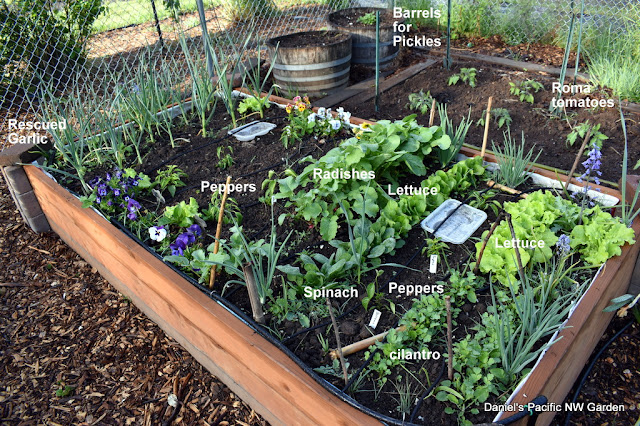The vegetable garden is coming together nicely. I did a lot of work over the past few months, building the new raised beds, removing the old ones, filling the soil, changing the in-ground beds around. Now, most of that is done. There is always something, but now I can relax a little more.
The second raised bed. Everything is taking off now.
This winter I was excited to find Lemon Boy tomato seeds after years of looking. The I planted the plant out early with the water cone for protection, and the leaves burned. It's making a come back, yay. That's also good news because I wondered if they were planted out too early. It looks like they are just fine.
Mostly the third raised bed. It's quite a mix. The radishes are ready to eat. That will happen with the lettuce and spinach, too, before the peppers need the space.
These are the hybrid Roma tomatoes. They will need a sort of trellis before they flop over.
So far Extreme Bush tomato is looking nice in its container.
These thornless red raspberries are descended from some that grew under the fence into my yard from a neighbor, which I moved from the Vancouver place last year. There were some good raspberries then. This looks like a much better year.
Most of the vegetable garden. There are more tomatoes than I will grow next year. This is my tomato test garden year.





























